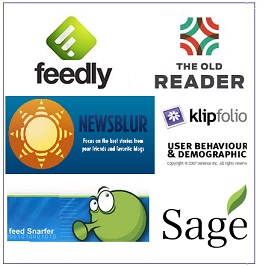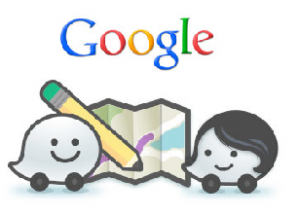
Arquivo para a ‘Framework’ Categoria
What sounds in Wikipedia?
This was a joke made at the launch of South by Southwest, the media conference in  Austin Texas, which actually was the basis of a new open source project to edits audio and animations to Wikipedia.
Austin Texas, which actually was the basis of a new open source project to edits audio and animations to Wikipedia.
Listen to Wikipedia, is the latest transformation of the online encyclopedia for additions and subtractions of sounds, strumming guitars and soothing sounds for you to meditate or listen during a massage or a reading.
.
Pitch changes are possible according to the size of the edition, the visual aspect green circles and white circles indicate editions editions of registered users, and also the size of the overlapping circles indicate how many editions.
The announcement was made at The Verge, and its creators Stephen LaPorte and Mahmoud Hashemi said the about L2W (original name): “There is something comforting in knowing that each user makes a noise, each issue has a voice or a roar” they said.
LaPorte Hashemi and built the Listen to Wikipedia using D3 and HowlerJS and say that was the inspiration Listen to Bitcoin, a digital project done by Maximillian Laumeister, floating in the bubbles of Bitcoin transactions.
Applications used in World Youth Journey
The event brings together young people from  around the world connected to the Catholic Church, is a week to be done, has special application for use by tourists who come to Rio de Janeiro.
around the world connected to the Catholic Church, is a week to be done, has special application for use by tourists who come to Rio de Janeiro.
A specific application was created by a young Campinas and made available by the Archdiocese of the region, called iJuventude, content, music, and all the events related to Journey “on the palm,” to facilitate the movement, but only being available for android devices and Apple.
Previously New Song Community had launched an application Follow the Cross.
Another application has been launched by the Municipal Tourism Rio de Janeiro in addition to containing information about Journey, suggestions of the best routes, places to be visited and tourist information in Rio de Janeiro.
The free download of the app in iOS and Android operating system, is also available in the app store WYD World Youth Day and Google Play as jmjrio2013, available in English, Portuguese and Spanish.
Also on the official guide Rio de Janeiro the application can be found.
Alternatives disabled to RSS Reader
Announced at a good time, the service was disabled RSS Reader yesterday,  although Google says it has no relation to the untimely death of its creator Aaron Shwartz, which was processed and pressed by available scientific articles from JSTOR.
although Google says it has no relation to the untimely death of its creator Aaron Shwartz, which was processed and pressed by available scientific articles from JSTOR.
There are several alternatives already known to the market, such as the already popularized Feedly (for Apple and Android), Digg Reader, NetNewsWire and Newsblur.
But there are alternatives still little known and quite interesting:
KlipFolio offers a unique experience of RSS, the application has a panel where you can customize the news, your favorite blogs, weather feeds, and many other information. The program is available for desktop and you can also customize it to your style.
Sage is an RSS feed basics and news aggregator for Firefox. Free course like everything in Firefox, you can browse the latest news feeds right from your Firefox browser Nabarra side. Its interface is extremely easy to navigate, with a top panel to the bottom panel of headlines and a history.
Snarfer (download) is a feed reader for experienced programmers, your RSS and Atom feeds, where the most experienced in RSS can find it, this is because its interface is organized in a uncomplicated way to be used as a generic application, but only there are versions for Windows.
There are other alternatives like FeedDaemon, Grablt and Ticher Desktop (download all)
Wireless internet free for all
The design is from Google, according to Wired magazine, and the idea is that they would be releasing balloons in the stratosphere, the second layer after the atmosphere located between 7 – 17 and until 50 km altitude about.
According to Wired magazine, the company is already sending balloons into the stratosphere in order to allow access to the internet anywhere on the planet, even if it is in a desert or something sea, being part of a project called Loon, who has just the “balloon”.
is already sending balloons into the stratosphere in order to allow access to the internet anywhere on the planet, even if it is in a desert or something sea, being part of a project called Loon, who has just the “balloon”.
According to the same magazine online, the search giant already is developing an experimental project in South Africa, with the aim of connecting a billion people in sub-Saharan Africa, and then expand to Southeast Asia, connecting over a billion people.
Google intends to build huge wireless networks across Africa and Asia, using high-altitude balloons and balloons.
To give visibility to the campaign, Google has amassed an ecosystem of low-cost smartphones running Android in microprocessors low power consumption.
Without using the traditional infrastructure, the signal Google is performed through high altitude platforms – balloons and airships – which can transmit to the areas of hundreds of square kilometers, according to a blog post African.
Google buys Waze
 Even with extraordinary Maps and Earth applications increasingly integrated and accurate, Google materialized on Tuesday (11 06) the purchase of Waze, maybe the reason is the collaborative feature (the user can feed given traffic situations, for example) and the huge social characteristic of the Israeli app (Waze owners).
Even with extraordinary Maps and Earth applications increasingly integrated and accurate, Google materialized on Tuesday (11 06) the purchase of Waze, maybe the reason is the collaborative feature (the user can feed given traffic situations, for example) and the huge social characteristic of the Israeli app (Waze owners).
With the app you can redirect your path, from routes users to suggest taking frequent destinations, and find the cheapest gas station along the way, knowing blockages or accidents.
You can report information even via voice command hands-free, that are activated waving a hand in front of the screen of the smartphone (or start proximity sensor smarphone).
Users gain points when contributing with information about road and accumulate points by changing its classification in Waze.
Since the points are designated users starting with “Waze Baby” and going to “Waze Royalty”, a user with many points.
The Waze has 28 million users and according to the website Blomberg purchase was $ 1.1 million.
iOS 7 is already the butt of jokes
Announced in yesterday at the opening of WWDC, Apple’s annual conference, iOS 7,  among other news at WWDC, the company’s annual conference, the operating system of iPhones and iPads became the target of jokes in social networks.
among other news at WWDC, the company’s annual conference, the operating system of iPhones and iPads became the target of jokes in social networks.
In profile Jony Yve, Redesins Things, in allusion to the head of design at Apple, in Tubmlr there playing with the designs simple, minimalist design of iOS icons made no texture, were some of the games,
According announce the event, iOS 7 will be available “in the fall” (Spring in Brazil, from September) models from the iPhone 4, iPad 2 and iPod Touch 5th Generation, also versions of the iPhone 3GS, but the old iPads and iPods Touch 4th generation before did not receive the update system.
But beta release to developers, can now be downloaded, surprised by this joke´s design .
App Brazilian wins contest
The Colab with three finalists competed and won the race against application of the United States and Israel.
The main difference of Colab was the use of gamification, which makes it look like a game to the user, each share of the User he gets points added to the coefficient “colab”.
The application, available for Android and iPhone, also has an online version.
The AppMyCity earned a prize of $ 5000 for Quick, a Brazilian company that created the application.
The network, the internet and the Web
Were years of the Cold War, the ongoing tension between the communist world led by the Soviet Union and the capitalist world led by the U.S., and the first idea of the electronic network was not having a central command so that he could keep the links in the event of destruction of some points by a war between the two blocks in tension.
So the network should be mounted without a central command, a system in which all points (network nodes) had autonomy and where the data transmitted in any direction or order not to lose the contents, the project was outlined ARPAnet Paul Baran, designed by Agency Advanced Research Projects (Advanced Research Projects Agency) of the U.S. government.
But the network went out of military control in 1970 and crisscrossed four U.S. universities, but in the next 4 years the number grew to 40. The exchange of messages and files becomes possible, and universities launch several projects, among them, the Project Gutenberg Michael Hart with the publication of books, the University of Illinois in 1971.
That same year, it created the first commercial network in the U.S., Telenet, as an access service.
The name has been used only in Internet 1982. In 1983, Vinton Cerf and Khan create the network communication protocol, TCP / IP (Transmission Control Protocol / Internet Protocol), the common basis of instructions and codes used by all computers connected to the network today.
But the Web as an application protocol only arrived in 1991, with the hypertext system, prophesied by Ted Nelson years before, and now implemented by Tim Berners-Lee, came the Web, the World Wide Web
Thus the metaphor of the network becomes years later an electronic means of communication the internet, and in the 90s a mode of communication between billion person who is the Web
Social networks were only possible within this universe of hypertext with the Internet as a medium.
Google and Facebook compete Waze
The Israeli startup Waze company already has two formidable competitors vying Web acquisition: the giants Google and Facebook.
The novelty of this software that gives the map and indicates the traffic is communication between users, so if there was an accident or there is a checkpoint pathways is the user knowing.
The navigation system captures data satellite Waze, and acquired great popularity, which is generating a bidding war with the company’s Facebook and Google, the site reported Bloomberg.
The Waze developed navigation application using social networking features, and is interested in values above $ 1 billion and is receiving expressions of various candidates for purchase.
Other information reported by the media claimed that Facebook held talks to buy Waze for up to $ 1 billion, then the business‘re near.
Facebook: more adults fewer young
According to a survey by the Pew Research Center, made with 802 young Americans between 12 and 17 years, young people are bothering with the excessive number of posts and the “drama” in the social network, which in their interpretation is due to the presence of adults.
The study found that a liking for Facebook, youth is precisely the posts “futile” friends on the social network, and secondly there is a concern with the need to manage your reputation online, looking at comments about her.
Now most of the adolescents interviewed were more happy with the use of tools like Twitter and Instagram, reporting that they can express themselves better in those platforms, indicating some already obsolescence Facebook.
Facebook still claim that because the network is a place where there.

